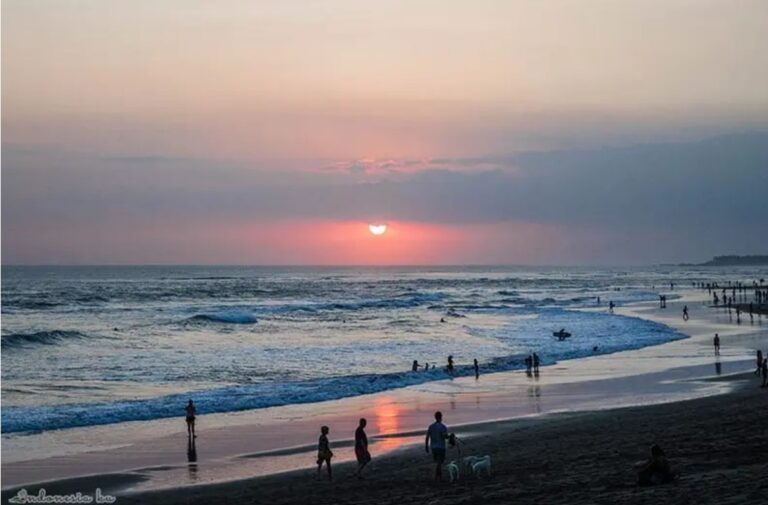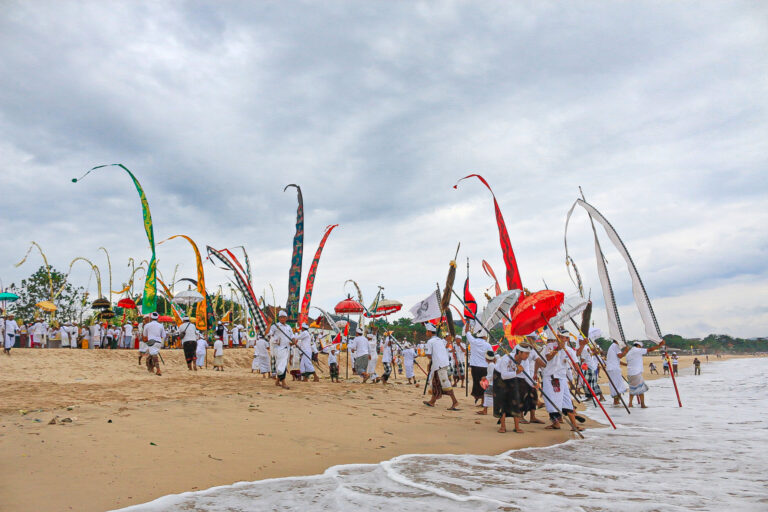Tossing up between Bali and Da Nang for your next trip? Both are popular destinations in Southeast Asia, but they offer very different kinds of experiences.
Bali is an island with its own distinct identity. It might be part of Indonesia, but it feels like a country in its own right, with a unique blend of Hindu culture, surf towns, rice terraces and coastal villages. Da Nang, on the other hand, is a coastal city in central Vietnam, one stop along a long, varied stretch of mainland coastline.
In this guide, we’ll compare the two in all the ways that matter. From food and culture to nightlife and nature, we’ll lay it out clearly so you can decide which one suits your plans better. The goal isn’t to pick a winner straight away, but by the end, you’ll have a good sense of which place ticks more boxes for your style of travel.
Bali vs Danang (A Brief Comparison)
Having a hard time deciding between Bali and Da Nang? Here’s a quick comparison of the two, from food and culture to nature and nightlife.
- Beaches: Da Nang beaches are more relaxing, while Bali offers more variety.
- Things to Do: Bali offers a wide range of activities from cultural and natural to vibrant nightlife, meanwhile Da Nang has fewer options.
- Culture: Bali has a more immersive and distinct cultural experience.
- Food: Bali wins for variety, quality, and international flair. Da Nang wins for being affordable and authentic.
- Quick answer: Bali is hard to beat for variety and depth in culture, food, and things to do.
Bali In Brief: What’s It Like?

Bali is an island with its own unique vibe, part of Indonesia but feeling like a world of its own.
It is packed with contrasts: lush rice terraces meet bustling towns, sacred temples sit alongside beach bars, and surfers share the waves with yogis and artists. The island’s Hindu culture shapes everything, from daily rituals to festivals, giving Bali a spiritual undercurrent that you feel as soon as you arrive.
It is touristy in spots, sure, but there are also quiet corners and wild nature if you want to get off the beaten path. Bali offers a little bit of everything, whether that is beach days, jungle hikes, cultural deep dives, or just chilling in a villa with a view.
Da Nang In Brief: What’s It Like?
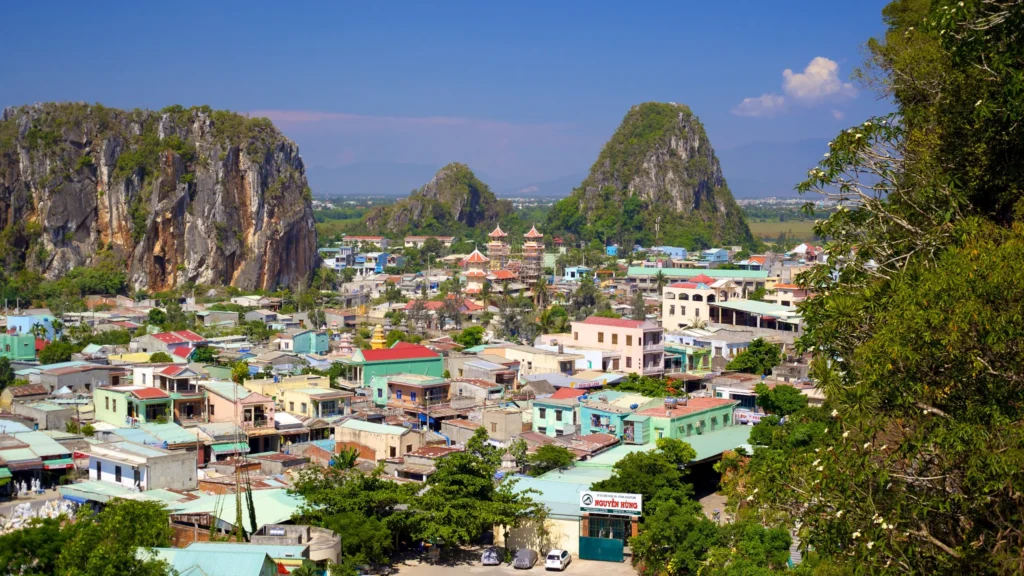
Da Nang is a modern coastal city in central Vietnam, sitting along a long stretch of some of the country’s best beaches. It is less a tourist hotspot than Bali, but it is quickly growing thanks to its laid-back vibe, affordable living and access to cultural and natural attractions nearby.
Think wide boulevards, riverside cafes, beachside seafood and a relaxed but urban feel. Da Nang blends old and new. You have the Marble Mountains and ancient temples close to shiny malls and high-rises. It is a great base for exploring central Vietnam, with places like Hoi An and Hue just a short drive away.
Bali Vs Da Nang: Head-To-Head Comparison
We find that the best way to compare the two island destinations is to break down into sections the things that people take into consideration when choosing a holiday destination.
At the end, we can look back and decide which place comes out on top!
Beaches In Bali Vs Beaches In Da Nang

Da Nang’s beach scene is simple and easy. My Khe is the main stretch, long, wide, golden, and great for swimming. It’s rarely too crowded, the waves are usually mellow, and you’ve got space to breathe. It’s a good all-rounder, especially if you just want a classic beach day with minimal fuss.
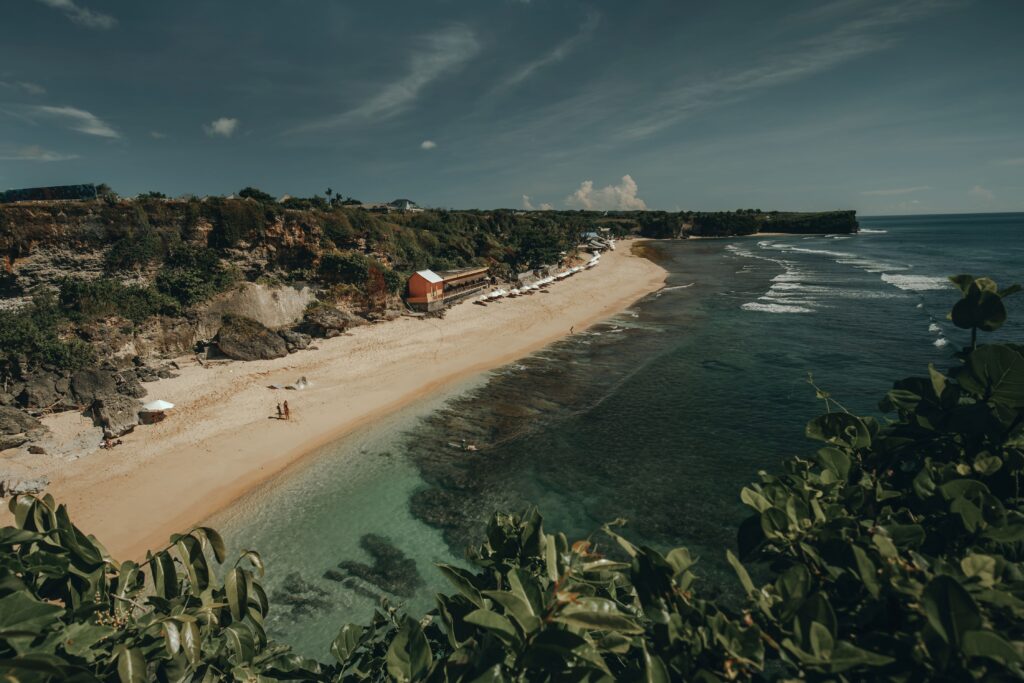
Bali is renowned for its stunning beaches, which range in diversity from the simple to the chaotic. Think world-class surf breaks in Uluwatu, laid-back grey-sand shores in Canggu, calm blue bays in Sanur and Nusa Dua, and snorkel-friendly coves off Nusa Penida.
You’ve got chilled swimming spots, pumping surf, dramatic cliffs, fishing villages, volcanic sands, it’s all here.
Verdict: Da Nang is relaxing and straightforward, but Bali wins this one for sheer variety. Whether you’re surfing, swimming, exploring or just staring at the sea, there’s a beach for it in Bali.
Watersports In Bali Vs Watersports In Da Nang

Bali is a water sports playground with something for everyone. In places like Nusa Dua and Tanjung Benoa, you’ll find jet skiing, parasailing, flyboarding, and banana boats ready to go, all run by seasoned operators.
Surfing is huge too, obviously, with waves for beginners and pros across spots like Kuta, Seminyak, and Uluwatu. Add in white water rafting in Ubud and wakeboarding in Benoa Harbour, and you’ve got a solid line-up of thrills on the water.
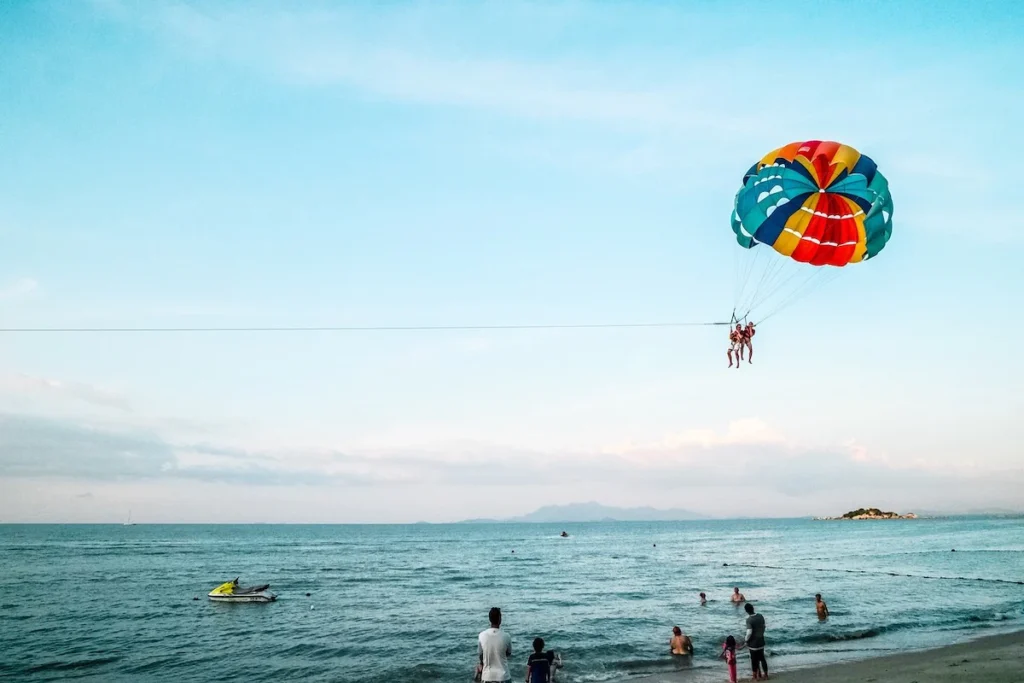
Da Nang offers a more relaxed vibe when it comes to water sports. You’ll see jet skis and parasailing off My Khe Beach, and there’s decent surfing when conditions are right, especially from September to March.
Kayaking and paddleboarding are popular too, especially around the Son Tra Peninsula. It’s a slower pace, but still has its moments.
Verdict: Bali wins for sheer variety, accessibility, and year-round options. Da Nang has a few decent choices, but Bali’s infrastructure and consistent conditions make it easier to dive into water-based fun.
Snorkelling And Scuba Diving In Bali Vs Da Nang
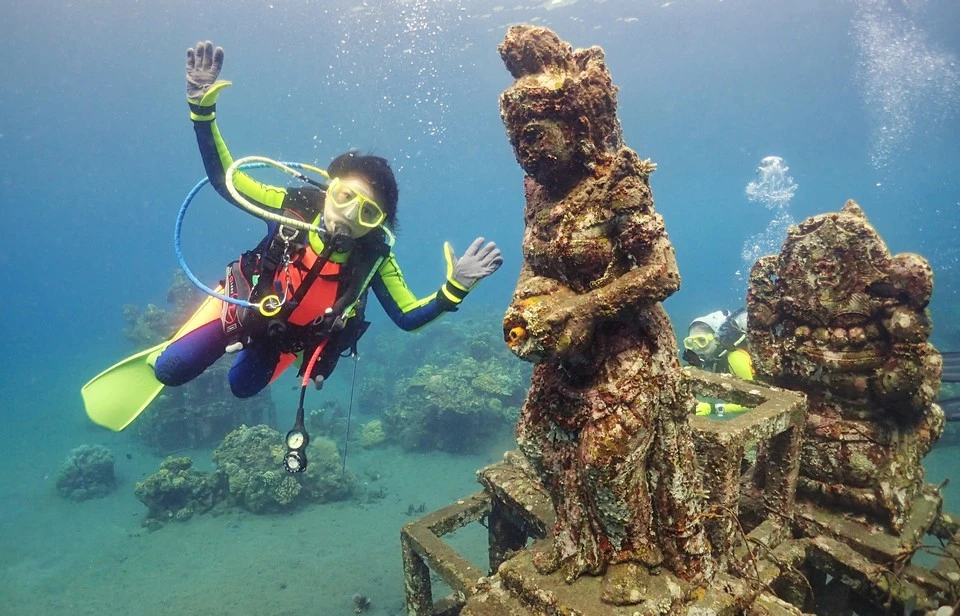
Bali is a major diving destination, with famous spots like Tulamben’s USAT Liberty wreck, the crystal-clear waters of Amed, and manta rays off Nusa Penida. Snorkelling is easy to access too, even beginner-friendly locations like Padang Bai or Menjangan Island offer colourful coral and marine life.
The diving scene is well-developed, with numerous schools, dive shops, and live-aboard options for more adventurous scuba diving.
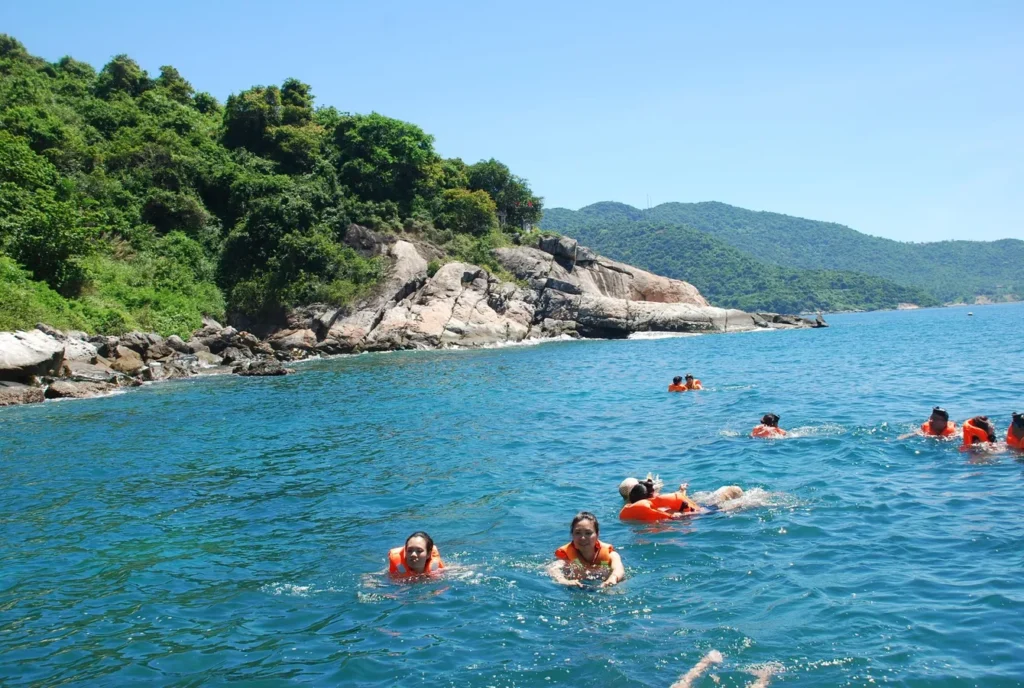
Da Nang isn’t as established for diving or snorkelling. There are some day trips to the nearby Cham Islands, which offer passable conditions and basic facilities, but visibility and marine biodiversity can’t really compete. It’s more of a side activity than a highlight.
Verdict: Bali is the clear winner here. With world-class dive sites, better conditions, and loads of variety, it’s one of Southeast Asia’s top underwater destinations. Da Nang is fine for a quick snorkel, but it’s not why you’d come.
Things To Do In Bali Vs Da Nang

Bali comes alive with variety; beach, jungle, culture and wellness all wrapped up in one island. Explore Ubud for yoga classes, art galleries, jungle treks and cascading waterfalls.
Hike Mount Batur at sunrise, visit sacred water temples like Tirta Empul, wander the rice terraces or seetemple dancers at sunset. Down on the south coast, surf world-class breaks in Uluwatu, stroll the boutiques in Seminyak or hang out poolside in Canggu.

Da Nang may be smaller, but it packs a punch. The Marble Mountains are a short drive away, and you can tackle the iconic Hai Van Pass by motorbike for unbeatable coastal views. Nearby Ba Na Hills delivers playful thrills with its Golden Bridge Hands and the Bana Hills Fantasy Park. Meanwhile, Asia Park Da Nang brings retro-fun with a Ferris wheel, light shows, and rides nestled in landscaped gardens.
Throw in compact city highlights like Dragon Bridge and breezy seaside walks on My Khe Beach, plus easy day trips to the ancient towns of Hoi An or Hue, and you’ve got a rewarding but tighter itinerary.
Verdict: Bali wins. Da Nang offers standout attractions that are memorable, but Bali’s scale and diversity give it the edge—making every corner of the island feel like something you haven’t yet experienced.
Safety In Bali Vs Safety In Da Nang
Both Bali and Da Nang are considered safe destinations for tourists visiting Southeast Asia.

Bali generally has a low crime rate, and violent crime against tourists is rare. Petty theft can happen, especially in crowded areas, but most travellers find the island welcoming and easy to navigate.
The local police and community are used to tourists, which adds to the feeling of security.

Da Nang also has a strong reputation for safety. It’s a coastal city with a relaxed vibe and low levels of serious crime. Street crime is uncommon, though, as with anywhere, keeping an eye on belongings in busy spots is wise.
Actual travellers often praise Da Nang for its friendly locals and safe environment, making it a comfortable choice for solo visitors and families alike.
Both destinations have their share of typical travel cautions, but overall, safety is not a major concern in either place.
Verdict: Draw. Bali and Da Nang both offer safe travel experiences, with friendly locals and low crime rates. If safety is your priority, either destination is a solid pick.
Nightlife In Bali Vs Nightlife In Da Nang

Bali is famous for its vibrant nightlife, offering a wide range of options for night owls. Areas like Seminyak, Canggu, and Kuta buzz well into the early hours with beachfront bars, rooftop cafes, and multi-story dance clubs and, of course, the world famous FINNS Beach Club.
Live music venues and cocktail lounges cater to a variety of tastes, while beach parties add an extra layer of excitement. Whether you’re after chilled sunset drinks or all-night raves, Bali delivers with style and energy.
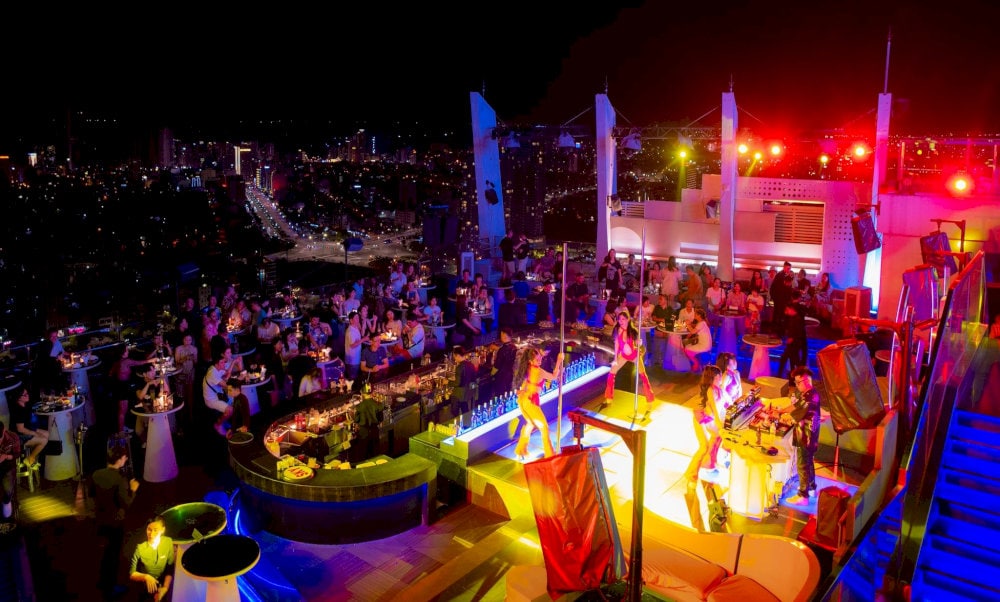
Da Nang’s nightlife is growing but remains more low-key and local-focused. There are some rooftop bars and lounges along the coast, and you’ll find a handful of clubs with live DJs and dancing.
The scene is much quieter compared to Bali, with fewer international tourists and less variety. It’s ideal for those who prefer relaxed evenings rather than loud, all-night parties.
Verdict: Bali wins hands down. The variety, scale, and atmosphere of its nightlife make it the clear choice for anyone looking to party, socialise, or simply enjoy evenings full of energy.
Culture In Bali Vs Culture In Da Nang
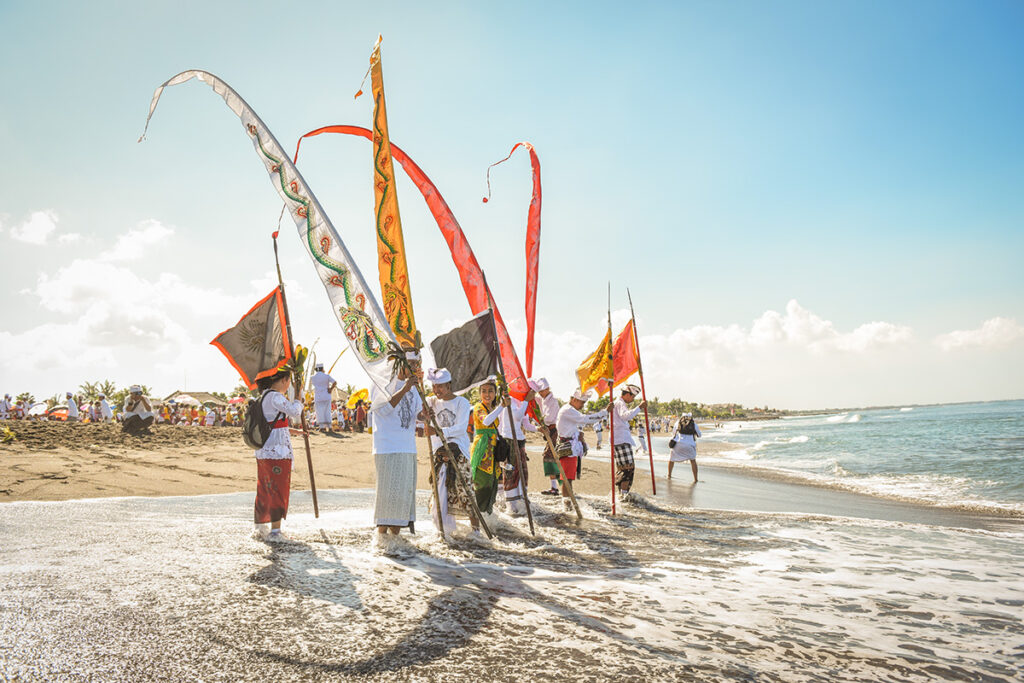
Bali stands out as a unique cultural island within Indonesia, blending traditional Indonesian and Balinese heritage. Its culture is deeply tied to a distinct form of Hinduism, visible everywhere in daily rituals, temple ceremonies, and artistic expression.
Visitors often find themselves immersed in a living culture that feels spiritual and vibrant, with music, dance, and festivals woven into everyday life.
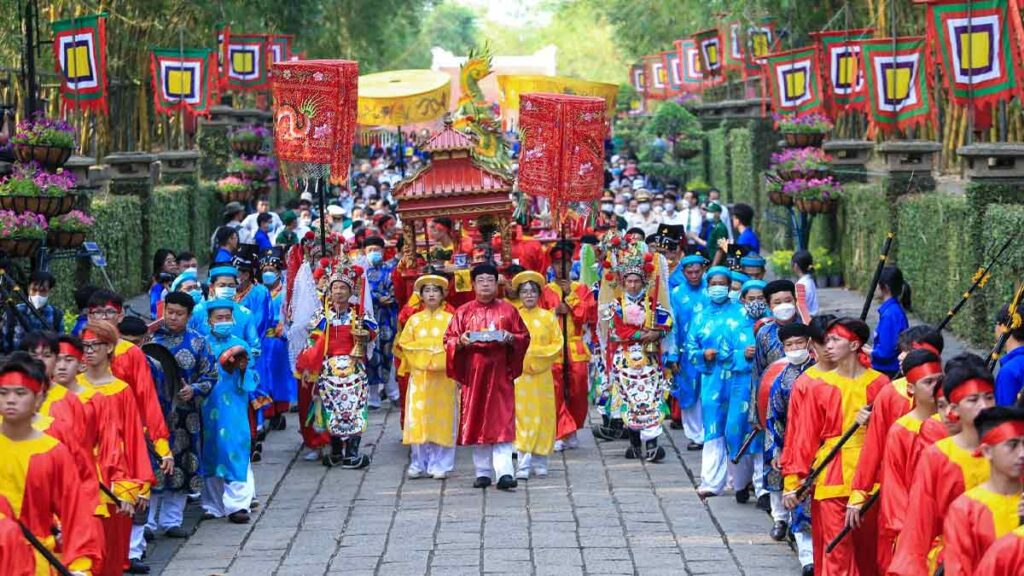
Da Nang’s culture reflects Vietnam’s long history and complex identity. It blends Chinese and Buddhist influences alongside indigenous traditions. The city also carries the weight of the Vietnam War, having been a key location for American troops.
Today, it’s shaped by a communist government that influences everything from urban development to social life. This mix creates a vibrant but different cultural atmosphere compared to Bali’s more open, spiritual vibe.
Verdict: Bali wins for offering a more immersive and distinct cultural experience that’s visible and accessible to visitors. Da Nang’s culture is rich and complex but less obvious to tourists and shaped by a different historical and political context.
Food In Bali Vs Food In Da Nang
Both Da Nang and Bali are renowned for delicious cuisine, but they’re worlds apart in what they have to offer.

Bali’s food scene is incredibly diverse. You’ll find everything from smoky street-side satay to polished beachfront restaurants with world-class menus. Local Balinese dishes like babi guling (suckling pig), lawar (spiced meat and veg), and nasi campur are must-tries, especially if you find a busy warung.
But what really sets Bali apart is the sheer range of international food. Canggu alone has everything from Aussie-style brunch spots to wood-fired pizza, vegan cafes, and fine dining.
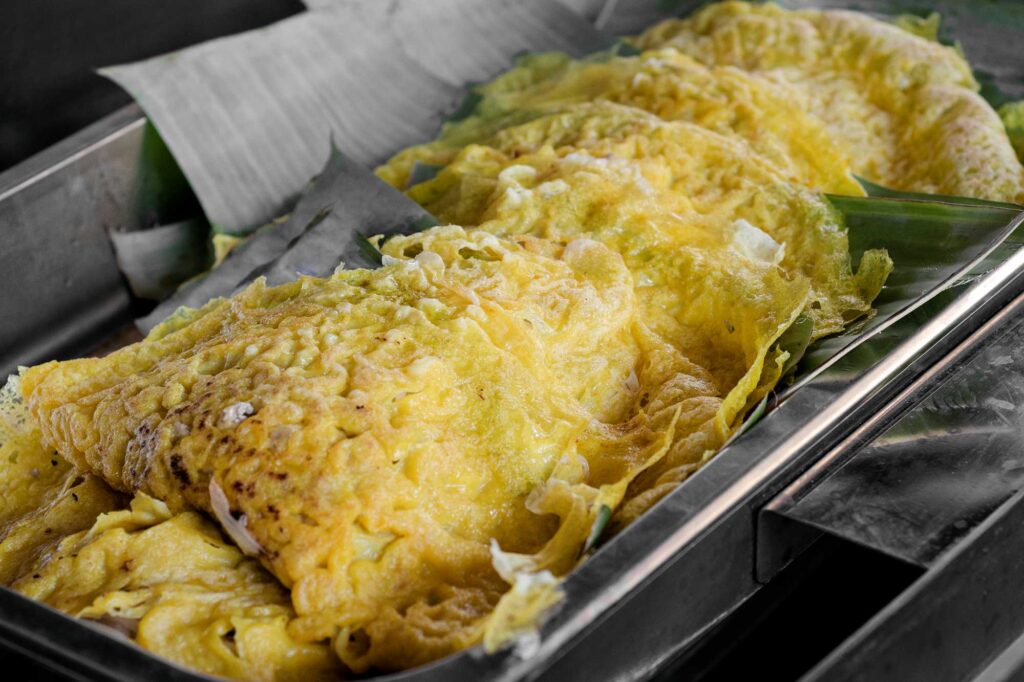
Da Nang’s food is more traditional and very Vietnamese. Expect bold, fresh flavours with lots of herbs, chilli, and fish sauce. You’ll get some of the best bánh xèo (crispy pancakes), mì Quảng (turmeric noodles), and bún chả cá (fishcake noodle soup) in the country here.
The street food scene is strong: it’s cheap, fast, and packed with flavour. You won’t find the same global fusion or presentation as in Bali, but it’s authentic and deeply satisfying.
Verdict: Da Nang is unbeatable for authentic, affordable Vietnamese food, especially if you love street eats. But Bali wins overall for variety, quality, and international flair. If food is a big part of your trip, Bali offers more to explore.
Accommodation in Bali Vs Da Nang

Bali offers a vast range of accommodation, from beachfront resorts in Seminyak and private villas in Canggu, to budget hostels and charming homestays in Ubud. Whether you’re after a luxury escape, a yoga retreat in the hills, or a surf shack by the beach, you’ll find it here.
Private pool villas are especially popular in Bali, and even mid-range options often come with tropical gardens, open-air bathrooms and stylish Balinese decor.
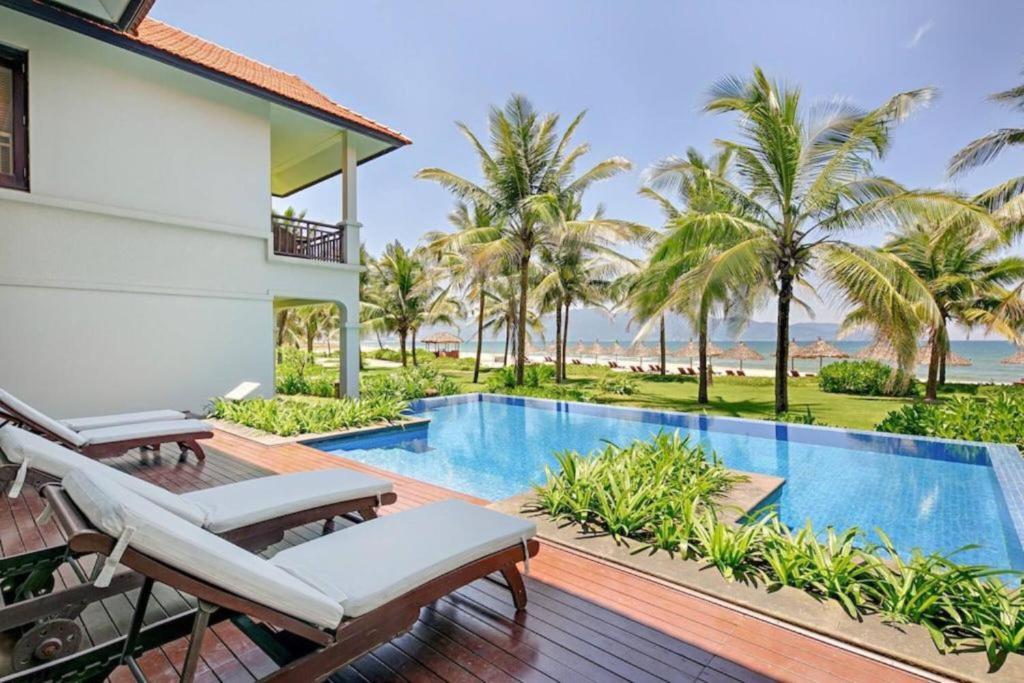
Da Nang, while smaller, still has plenty of choice. Beachfront resorts along My Khe Beach cater to families and couples, while boutique hotels and high-rise apartments in the city centre suit business travellers or short stays.
There are also family-friendly resorts with pools and kids’ clubs, plus easy access to nearby towns like Hoi An and Hue. Accommodation is often cheaper in Da Nang compared to Bali,with more modern amenities and less rustic charm.
Verdict: Bali wins. Da Nang offers solid options at good value, but Bali’s huge variety, unique aesthetics and abundance of private villas make it the stronger destination for accommodation overall.
Aesthetics Matter: Bali Vs Da Nang

Bali is famous for its lush, tropical beauty. The island is dotted with vibrant rice terraces, ancient temples, and traditional Balinese architecture that blends harmoniously with nature.
You’ll find intricate stone carvings, serene water gardens, and iconic gateways framed by jungle greenery. Many villas and resorts are designed with a focus on indoor-outdoor living, using natural materials that create a peaceful, exotic atmosphere.
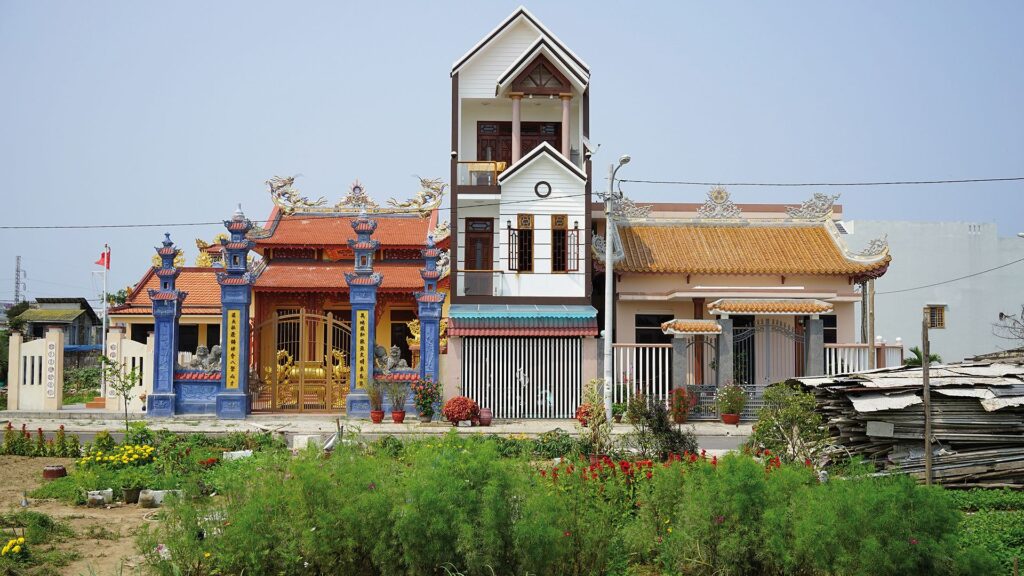
Da Nang, as a coastal city, combines modern urban design with natural landscapes. The skyline features sleek high-rises alongside colonial-era buildings and contemporary bridges like the Dragon Bridge with its colourful nightly light shows.
The nearby Marble Mountains and pristine beaches add a natural contrast to the city’s urban vibe. While not as lush or traditional as Bali, Da Nang offers a clean, fresh aesthetic with stunning views of the sea and mountains.
Verdict: Bali wins. Its combination of natural beauty and timeless traditional design creates an immersive atmosphere you won’t find in many places — including Da Nang.
Which Has Better Shopping? Bali Or Da Nang
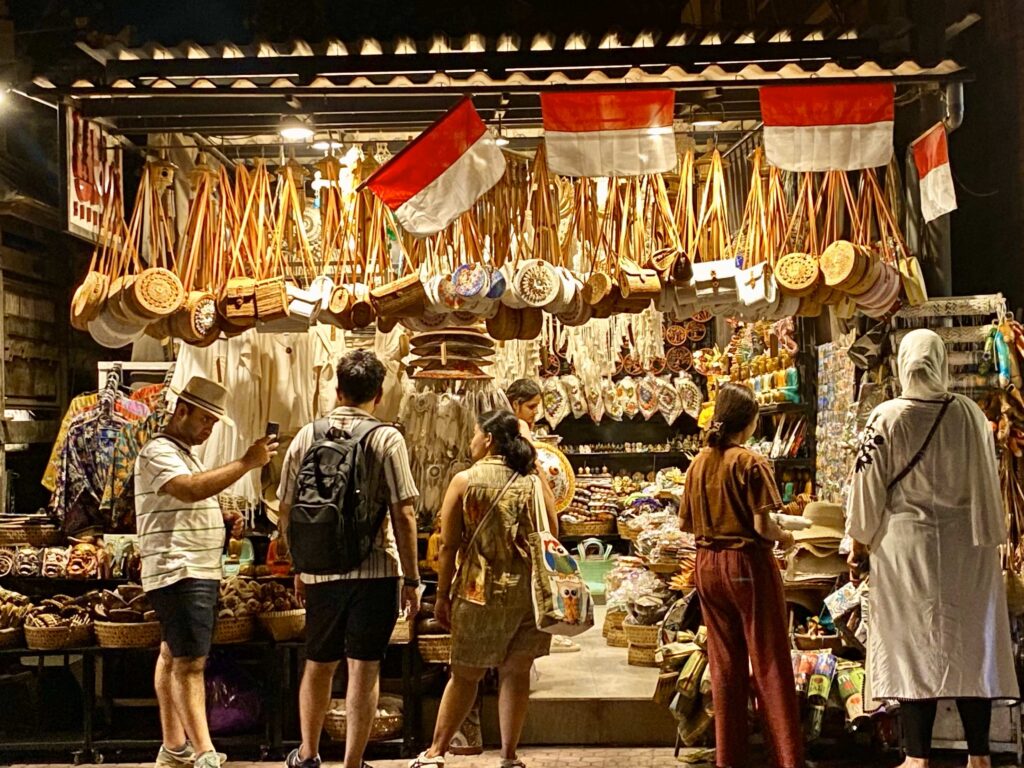
Bali is the clear favourite for shopping lovers. You’ll find everything from handcrafted jewellery and batik textiles to chic boutiques in Seminyak and local markets in Ubud. Canggu’s boho stores and beachside pop-ups are also a big draw. There’s no shortage of shopping opportunities here.
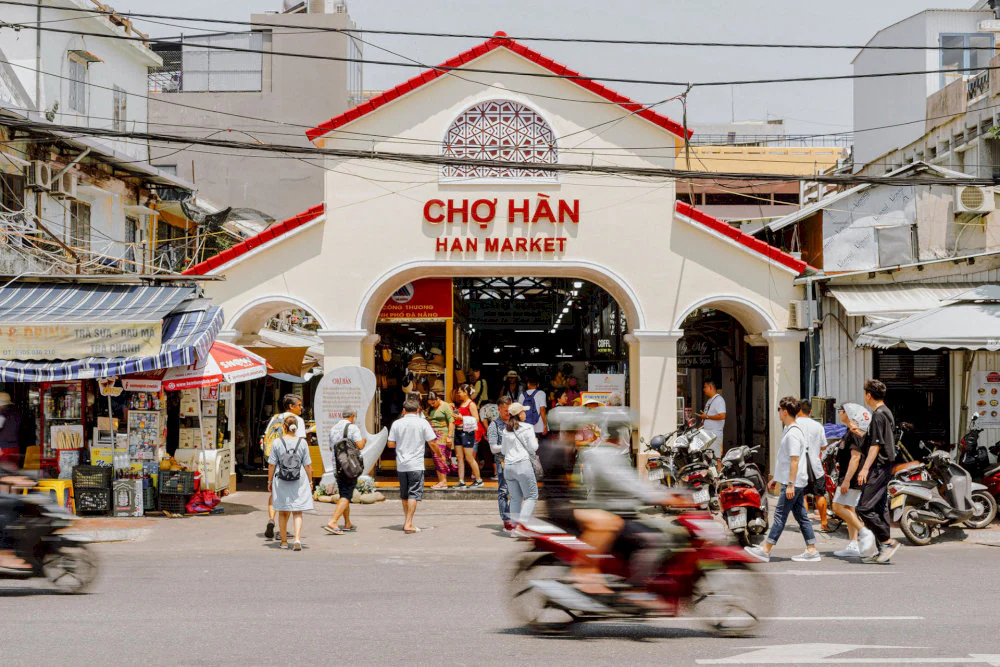
Da Nang has fewer options but still delivers. Visit Han Market or stroll Bach Dang Street for souvenirs, local snacks and clothing. Modern malls like Vincom offer global brands, while nearby Hoi An is famous for tailored clothing and leather goods.
Verdict: Bali wins. While Da Nang has interesting sights and some gems, Bali simply has more variety, more local shops, and more reasons to leave space in your suitcase.
Which Is Best For Digital Nomads? Bali Or Da Nang

Bali is a global digital nomad hub. Canggu leads the way with coworking spaces, laptop-friendly cafes and a built-in remote worker scene. Fast internet, creative networking events, and visa options make it an easy base for long stays.

Da Nang is growing in this space. You’ll find modern coworking spots, affordable living, and a chilled pace near the beach. It’s quieter than Bali but still has good infrastructure for remote work.
Verdict: Bali wins. Da Nang offers value and comfort, but Bali’s established digital nomad community and lifestyle perks are still a step ahead.
Which Is Best For Expats? Bali Or Da Nang?

Bali has long attracted expats thanks to its wellness lifestyle, international schools, and thriving business scene. Canggu, Ubud and Sanur all offer unique expat-friendly environments.

Da Nang is popular with English teachers, retirees and entrepreneurs looking for a quieter, cheaper life. It’s easy to settle in, and nearby towns like Hoi An add charm.
Verdict: Bali wins. Da Nang makes a strong case with lower costs and less chaos, but Bali offers more opportunities, social life, and a wider support network for expats.
Bang For You Buck: Which Is Better Value?
Da Nang offers excellent value across the board. You can feast on local favourites like Mi Quang and Bun Cha, explore nearby towns like Hoi An or Hue, and enjoy beachfront resorts, rooftop cafes, and historical sites for a fraction of what you’d pay in Bali. Even transport, tours and entry fees are more affordable. For many travellers, this coastal city offers serious bang for your buck.
Bali still caters well to budget-conscious travellers, with warungs, homestays and scenic free attractions around Ubud and Canggu. But the costs can climb quickly in tourist zones or private villas.
Verdict: Da Nang wins. It’s a great choice for value seekers chasing vibrant culture, delicious food and beautiful beaches on a tighter budget.
Final Round Up: Bali Vs Da Nang
Bali takes the crown. It’s got world-class beaches, rich culture, buzzing nightlife and endless things to do, all wrapped in a setting that feels like a destination in its own right.
Da Nang is great for value and side trips, but it can’t match Bali’s depth or variety.
If you’re choosing between the two, Bali is the one that gives you more: more beauty, more experiences, more reasons to come back.
FAQs
When Is The Best Time To Visit Da Nang?
The best time to visit Da Nang is between March and May or September and October. These shoulder months offer warm, mostly dry weather without the intense heat or heavy crowds. From June to August, things heat up quite a bit, especially in the middle of the day.
The rainy season usually kicks off around late October and can run through to January, bringing short but frequent downpours. If you’re planning beach days or day trips into the hills, it’s better to avoid that wetter period.
Which Place Is Better? Da Nang, Bali Or Koh Samui?
It depends on what you’re after. Koh Samui has calm beaches and a sleepy, resort-style pace. Da Nang is more modern, with wide streets, high-rise hotels and a growing nightlife scene.
But Bali still stands out for its mix of nature, tradition, surf culture and variety. It feels more established for travellers, with something for everyone, especially if you like switching between beaches, cafes, rice fields and mountain temples all in one trip.
Most people who’ve done all three will tell you Bali has more layers to it.
You can look deeper into the comparison between Bali and Koh Samui in our guide.
How Far Is Da Nang From Ho Chi Minh City?
Da Nang is about 960 kilometres north of Ho Chi Minh City. The quickest way to get between them is by plane, with multiple daily flights taking around an hour and a half.
If you’ve got time and want to see more of the countryside, the train is a popular option. It’s a long ride, usually around 16 hours, but it’s scenic in parts and fairly comfortable if you book a soft sleeper. Buses also run the route, but they’re less comfortable and take just as long.
Which Is Easier To Get To From Australia? Bali Or Da Nang?
Bali is much easier. You can fly direct from cities like Sydney, Melbourne, Brisbane and Perth, and the flight times are usually between five and seven hours.
Da Nang doesn’t have direct flights from Australia at the moment, so you’ll need to connect through places like Ho Chi Minh City, Hanoi, Singapore or Bangkok.
If convenience is a priority, Bali wins hands down. It’s also worth noting that Bali’s airport is better set up for international arrivals, with faster processing and more English signage.
Final Thoughts On Bali Or Da Nang
Da Nang has a lot going for it. The beaches are wide and clean, the food scene is fresh and full of local flavour, and the city itself feels modern and easy to navigate. It’s a solid option if you want a mix of city life, seaside relaxation and access to other nearby destinations.
But Bali still feels like the more complete destination. It offers more variety, more depth, and more freedom to shape your trip how you like it. You can be in the surf one morning, up in the hills by lunch, and walking through a temple courtyard at sunset. It’s also better set up for international travellers, especially if you’re coming from Australia.
If you’ve already been to Bali and want something new, Da Nang is a great choice. But if you’re choosing between the two for your first or only trip to the region, Bali is the place that delivers more across the board.











